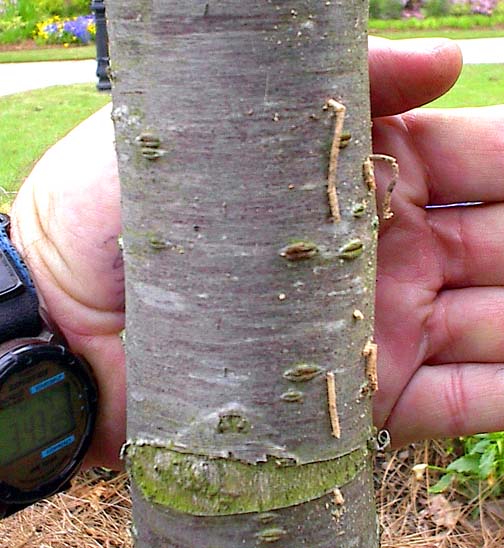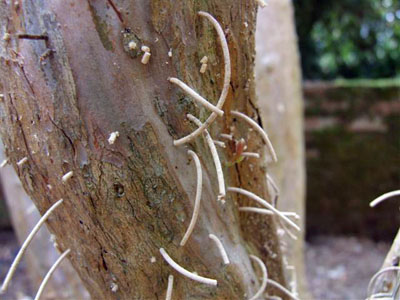 This small beetle attacks stressed plants, boring small holes into the bark and wood. The adult beetle lays eggs at the end of this tunnel and as it makes its way out of the tunnel it leaves behind “ambrosia”, a fungus which the larvae eat after hatching. An indicator of beetle activity is sawdust toothpicks extruded from the bark. In many cases once this beetle attacks and the ambrosia clogs the plumbing (xylem and phloem) of the infested branch or trunk, the infested plant part will die.
This small beetle attacks stressed plants, boring small holes into the bark and wood. The adult beetle lays eggs at the end of this tunnel and as it makes its way out of the tunnel it leaves behind “ambrosia”, a fungus which the larvae eat after hatching. An indicator of beetle activity is sawdust toothpicks extruded from the bark. In many cases once this beetle attacks and the ambrosia clogs the plumbing (xylem and phloem) of the infested branch or trunk, the infested plant part will die.
Certain plants are very susceptible to this beetle including crepe myrtle, Japanese Maple and many larger trees such as oaks and hickories. Once infested topical insecticides are of limited effectiveness though the sprays can protect uninfested parts of the plant.
The best prevention is to keep the plants out of stress by proper watering and cultural care.

